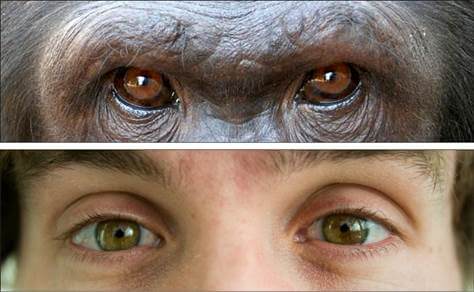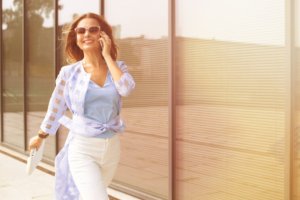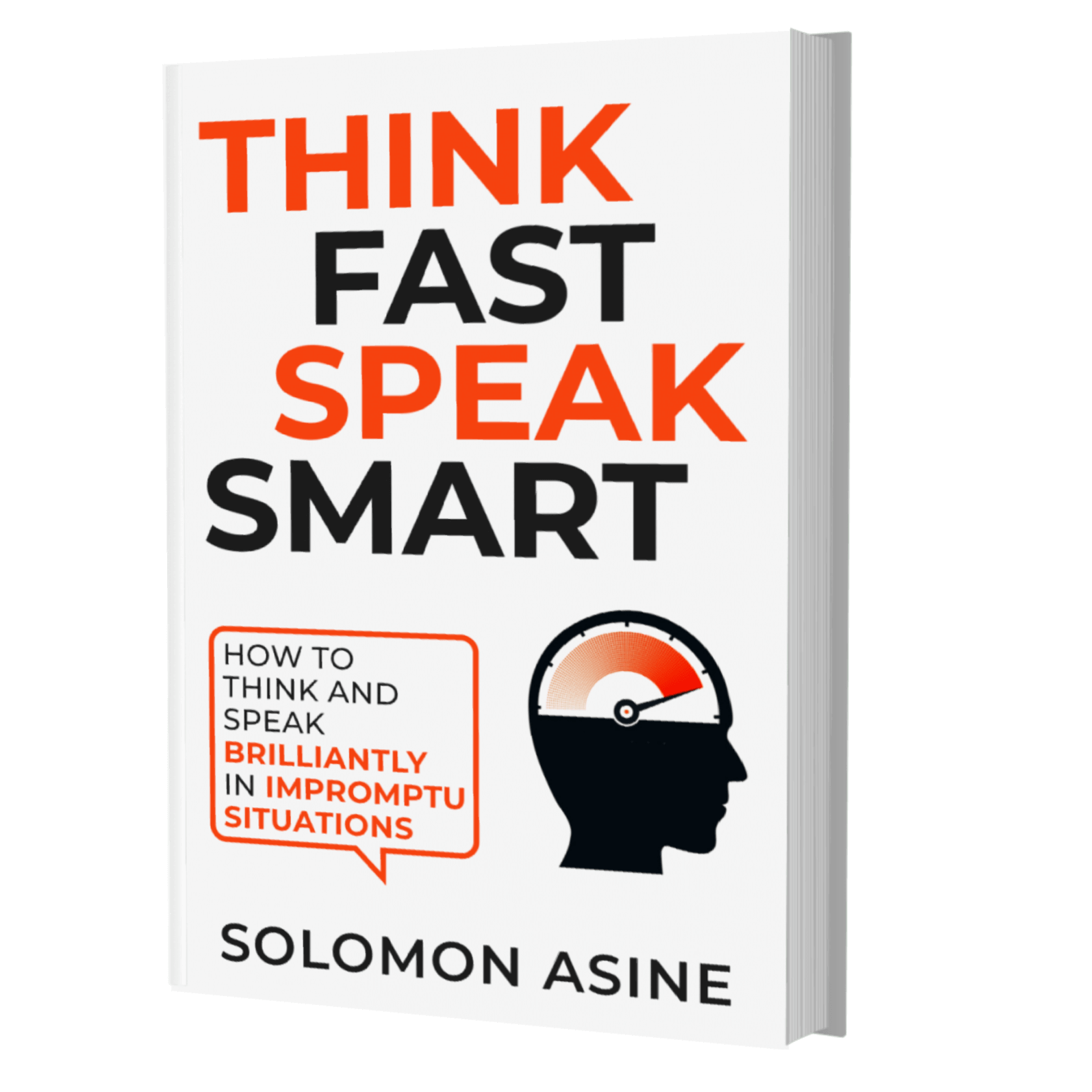
Leaving a Toxic Job: 10 Steps to Get Out
Have you ever found yourself stuck in a job that drains the life out of you? A challenging 9 to 5 job can be difficult
There are several things that we need to know about eye contact. For example, do you remember as a child, how your parents would tell you to go to your room or maybe to finish your meal without saying a word? Do you also remember how that man was staring at you, that you felt so uncomfortable? I’m sure you remember. I’m also sure you remember other instances were just with eye contact; there was communication without the use of words.
Eye contact is a powerful aspect of nonverbal communication. We use it in different ways. Several studies have shown that eye contact is one of the most important cues for human communication and social interaction. The sad news is that there are a lot of people who, unfortunately, are unaware of power in the effective use of eye contact. Some other people may be aware but lack the skill and confidence to put it to use.
Before I show you how to make your eye contact more effective, let us review why it is important in the first place.
Why is eye contact important?
It enables co-ordination
When compared with other primates, humans have very visible eyes. In this class of mammals, we are the only ones that have a large portion of white or sclera in the eyes. In the case of other primates, the white is either non-existent or is present in a non-significant fraction. In humans, the huge portion of white makes the gaze very detectable. So, it is easy to tell where someone is looking. If this feature is absent in a human eye, one would have to move the head to give a signal for where our eyes are looking.

As early as three months old, babies rely on the detectable eye movement of a parent to determine the direction of gaze. This unique ability of the human eyes that enables coordination was the study in what is called the cooperative eye hypothesis.
Reveals human feelings
You can determine how someone feels just by looking at their eyes. Eckhard Hess, the pioneer of the study of pupillometry, in his research, found that in general, the size of the pupil increases when we view something that stimulates us. For example, when we set our eyes on things that we like, our pupils dilate.
On the contrary, when the object is unpleasant, our pupil constricts. We see these changes with different levels of temperament. When we are angry, the pupil dilates, and conversely, when we are in a calm state, the pupil constricts.
Also, do you have trouble starting conversations? Making strategic eye contact is a guaranteed first line of action. Do you want to get the attention of a stranger? You can trust a good eye contact to make that happen. We make quick connections by using strategic eye contact. Just one quick second of eye contact with a stranger can result in some connection.
Window to the soul
It is a gateway to the mind. The saying, “the eye is a window to the soul.” is indeed true. Through the eyes, we can glean on certain hidden emotions. For example, through eye contact, you can tell when someone is shy, angry, lies, scared, and even how they feel about you. This is partly due to the eye contact effect, a phenomenon that upon eye contact, a section of the brain termed the “social brain” is activated.
Why people don’t make eye contact
Despite the power of effective eye contact, there are still a lot of people who avoid it altogether. Here are some reasons why some people avoid eye contact.
Dishonesty: Some people avoid eye contact when they are lying. You can immediately smell falsehood when they break the gaze. This is not true for everybody, as some people are habitual and “professional” liars, they know the tricks in the book.
Social anxiety: There are individuals who either because of a bad experience or genetically, are prone to anxiety when in public or when they are before strangers. This condition makes them avoid any form of eye contact. A socially anxious individual finds it uncomfortable to make eye contact. They see it as invasive.
Shyness: To some degree, it takes someone who is not shy to make eye contact. Avoiding eye contact is a common attribute of shy individuals.
Self-esteem: if you don’t see yourself as good enough, you try as much as possible to prevent anybody from seeing “how bad you are.” Individuals with low self-esteem do not feel the need to connect, so they tend to avoid eye contact, and in most cases withdraw altogether from any of such settings.
How to make effective eye contact
Don’t be annoying
As kids, my brother and I played a game that I would we called “gazing.” We would hold eye contact for as long as we possibly could. Whoever looks away first, loses. We barely last two minutes playing this game. It felt very uncomfortable looking into his eyes for an extended period.
When it comes to making eye contact, you want to avoid holding it for too long. Irrespective of the situation, attempting to hold eye contact for too long can send a wrong signal. Some research says 4-5 seconds, others say an average of 3.3 seconds, but I believe it all depends on the social situation.
Eye contact is usually shorter for casual conversations and longer for more serious conversations.
Conversation with a stranger
When having a conversation with a stranger, it is important to assert your level of comfort and confidence by holding eye contact appropriately, disconnecting at strategic intervals. It is also important to respect their private space while having such conversations, except you have an ulterior motive.
A stranger at a distance
Eye contact is the quickest way to connect with a stranger. The length of the gaze depends on your intentions. You may want to get their attention; you may want to show interest, or you may want to intimidate.
To get their attention, when you catch the gaze of the subject, hold it for a minimum of 3 seconds, at which point they should notice your presence.
If you want to show that you are interested in a stranger, especially one of the opposite sexes, this could involve more than one, 3 seconds minimum, eye contact with a relaxed countenance. Now, you must understand that these numbers are situational. For example, if your subject does not break the gaze after 3 seconds, you don’t want to keep the gaze, turning it into a contest. In this case, you can walk up to them and introduce yourself.
Eye contact could also be as a way of intimidating a subject or showing superiority. This generally involves a long and hard stare, holding your gaze until your subject looks away. We see this in boxing, during a pre-fight faceoff.
When addressing a group
Effective eye contact can make a presentation more impactful. When speaking to a group of people, you must connect with them by making appropriate eye contact. This also depends on the size of the group and the setting. When your audience is just two persons, you need to create a balance between both individuals. Balance is equally the key when speaking to a larger audience of ten to a hundred plus people. Spread your gaze from one end of the room to the other, making eye contact with an individual member of the audience.
Don’t look up or down
There is always the question of, where do I look to when I break eye contact? The answer is neither up nor down. When you break eye contact, avoid looking up (this is awkward anyway) or looking down (there is an exemption to this). When you break eye contact by looking up during a conversation, it raises several signals. Your conversation partner might think you are distracted, or you’re looking at their hair (depending on how high up you look), or you are just weird. On the other hand, when you look down, it could be a sign of subordination, submission, shame, intimidation. However, you could look down, coupled with some facial expression, when sympathizing with someone or when being empathetic.
When you break eye contact, look around the face, not away from the subject. Looking away from the subject on either side is an indication that your interest is somewhere else. When you break eye contact, make it very brief (two seconds at most) and then reconnect.
Make gradual improvement
If you find it uncomfortable making eye contact, and you feel the need to get better, don’t fret. They say a journey of a thousand miles begins with a step. Start by getting comfortable making eye contact with family and friends, and then find comfort with an acquaintance. In no time, you will be able to make eye contact comfortably with anybody.

To empower you to cultivate a strong self-esteem that transforms your relationships and equips you to overcome life’s obstacles with resilience
New!!! Free Training Replay in...
Check out our latest articles. Boost your social intelligence

Have you ever found yourself stuck in a job that drains the life out of you? A challenging 9 to 5 job can be difficult

You can express yourself confidently without feeling shy or experiencing burnout. Here is how to exude confidence as an introvert. As an introvert, maintaining your

Anyone, including introverts, can live an interesting and fun-filled life. Here is how to be interesting as an introvert. Generally, many people believe that introverts

We sometimes wonder if going into a relationship with a fellow introvert is a good idea. I mean, won’t the relationship be as boring as hell? Maybe not really!

Are you ready to get out of your shell to start your dream business? Here is how to be an entrepreneur as an introvert and become successful!

As an introvert, you might be wondering if you really can become successful as a business owner. Read on to know how business success works for introverts.

Sign up for our mailing list and you will receive the first chapter free!
By signing up, you agree to our terms and privacy policy.
Warning: Apply The Methods in This Training Responsibly

Sign up for our mailing list and get the first chapter for free!
By signing up, you agree to our terms and privacy policy